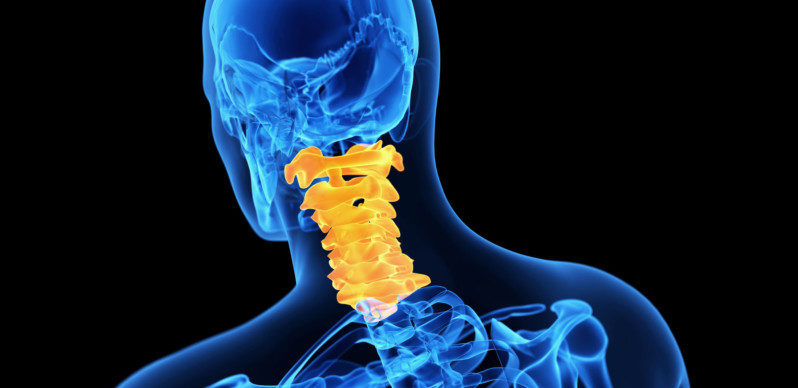Cervical Laminoplasty for Neck Pain Relief
What is Cervical Laminoplasty?
Cervical laminoplasty is a surgical procedure that plays a crucial role in addressing cervical spine issues, particularly those related to spinal cord compression. Some of these conditions include cervical spondylotic myelopathy, and other conditions like ossification of the posterior longitudinal ligament and cervical stenosis.
This innovative surgical technique involves creating more space for the spinal cord and nerve roots, thereby relieving pressure and restoring optimal functionality to the cervical spine.
In this article, we will learn about cervical laminoplasty in detail, including its purpose, the procedure itself, recovery, and who might benefit from this surgical option.
Understanding Cervical Spine Anatomy
The cervical spine, located in the neck region, consists of seven vertebrae (C1 to C7) and is responsible for supporting the head’s weight and allowing easier neck movement. It houses the spinal cord, a vital component of the central nervous system.
What is spinal cord compression?
Spinal Cord Compression
Cervical spine issues, like bone spurs, disc herniations, narrowing of the spinal canal (spinal stenosis), or the formation of ossification of the posterior longitudinal ligament, can lead to spinal cord compression.
Spinal cord compression can cause many symptoms such as:
- Weakness
- Numbness
- Pain
- Difficulty with balance
- Loss of coordination
These conditions are collectively known as cervical spondylotic myelopathy.
The Purpose of Cervical Laminoplasty
Cervical laminoplasty is designed to address spinal cord compression and cervical stenosis by creating more space within the cervical spine.
Unlike some other surgical procedures that involve the removal of the lamina (the back part of the vertebral arch) and fusion of the neck, laminoplasty involves preserving the lamina on one side while creating a hinge on the other.
This “hinged open” approach allows the surgeon to access the spinal canal without removing the lamina entirely and without fusing the neck.
It's time to get back
to doing what you love.
What Happens During Cervical Laminoplasty?
Creating Space
During the procedure, the surgeon creates a hinge on one side of the lamina, which can be likened to opening a door. This creates more room within the spinal canal, relieving pressure on the spinal cord and nerve roots.
Preserving Range of Motion
Unlike other surgical procedures that may limit neck movement, cervical laminoplasty aims to preserve the patient’s range of motion since cervical fusion is not performed. This is a significant advantage for those who wish to maintain flexibility and function in their neck.
Who Is a Candidate for Cervical Laminoplasty?
Patients who may benefit from cervical laminoplasty are typically those with cervical spine issues, such as cervical spondylotic myelopathy, who have not responded to conservative treatments.
Candidates for this procedure should be evaluated by a qualified neurosurgeon, who will consider factors like the severity of spinal cord compression, overall health, and the patient’s desire to maintain neck mobility.
Benefits of Cervical Laminoplasty
Cervical laminoplasty is a surgical procedure that creates new possibilities for individuals suffering from spinal cord compression, cervical spondylotic myelopathy, and other cervical spine conditions.
By preserving the lamina while creating a hinge, this procedure effectively expands the spinal canal, relieving pressure on the spinal cord and nerve roots without cervical fusion.
Candidates for cervical laminoplasty should consult with a qualified neurosurgical spine surgeon to determine the best course of action based on their unique condition and goals.
Risks of Cervical Laminoplasty
Like with any surgery, there are common concerns like infection, excessive bleeding, or reactions to anesthesia. Specifically for cervical laminoplasty, patients might experience a few post-surgery challenges:
- Neck pain/stiffness can last for weeks or months after surgery, affecting daily activities and comfort.
- Nerve Damage: Though it’s rare, any surgery around the spine carries a risk of damage to the nerves or spinal cord. This could affect sensation and movement, ranging from mild weakness to more serious conditions like paralysis.
- Non-Improvement: Sometimes, the surgery might not resolve all symptoms, or symptoms could return, requiring further medical intervention or management strategies.
- Reduced Neck Movement: Some patients might notice they don’t have the same range of neck motion as before, making certain activities more challenging.
It is important to talk to your doctor about the risks and benefits of surgery to help make an informed decision about the appropriate treatment plan.
Recovery and Post-Operative Care
Recovering from a cervical laminoplasty involves a critical period of healing and rehabilitation. Post-surgery, patients often experience immediate relief from some symptoms, however, full recovery requires time and patience.
Patients typically spend one or two nights in the hospital after which they can continue to recover at home.
Activity restriction after laminoplasty
Activity like high-impact exercise will be limited for several weeks but exercise can typically be resumed after 4-6 weeks. This should be discussed with your surgeon, who may have a specific, individualized protocol for you to follow.
Physical therapy is often recommended to help patients regain strength and mobility. Post-operative visits with the surgeon are essential to monitor progress and address any concerns.
Cervical laminoplasty offers a path to pain relief and improved function, allowing individuals to regain control of their lives and maintain their range of motion.
If you or a family member are considering this surgical option, contact our office today to schedule a consultation with one of our expert Neurosurgeons.
We can provide personalized guidance and ensure that you receive the most appropriate treatment for your cervical spine condition.

About Dr. William S. Cobb
Dr. William Cobb is an accomplished neurosurgeon in North Jersey and a proud member of Neurosurgeons of New Jersey, practicing out of their Ridgewood office conveniently located on East Ridgewood Avenue. During his Neurological Surgery residency, he became passionate about the development and treatment of brain tumors affecting the brain and spine. Dr. Cobb uses state-of-the-art technology for surgical intervention in the treatment of tumors of the brain and spine including Gamma Knife radiosurgery. He has vast experience in using modern minimally invasive surgery for the treatment of degenerative spine and intervertebral disc disease. Dr. Cobb serves as the Director of Neurosurgical Oncology at Valley Hospital. He's accepting new patients.
Recent Posts:






